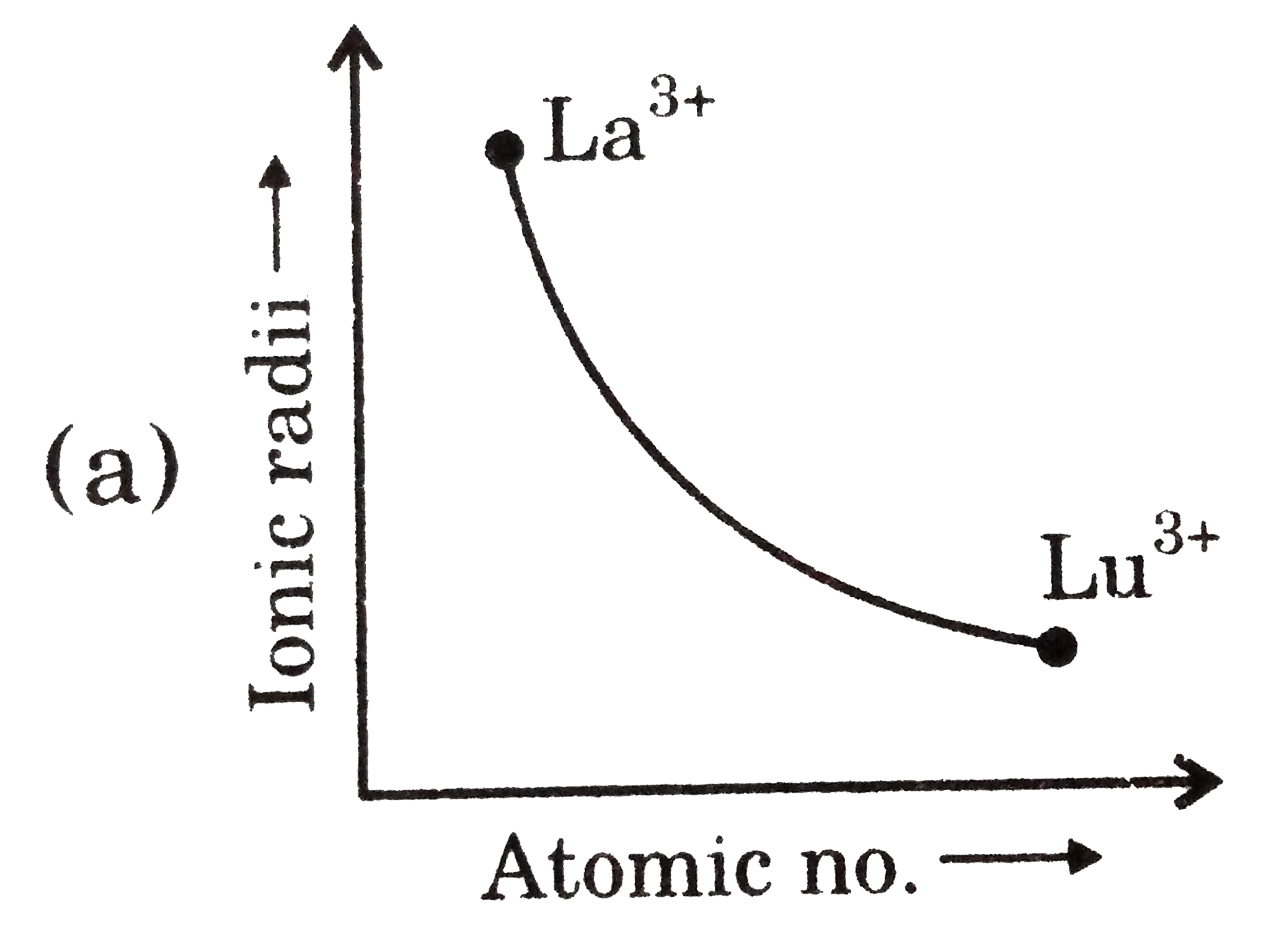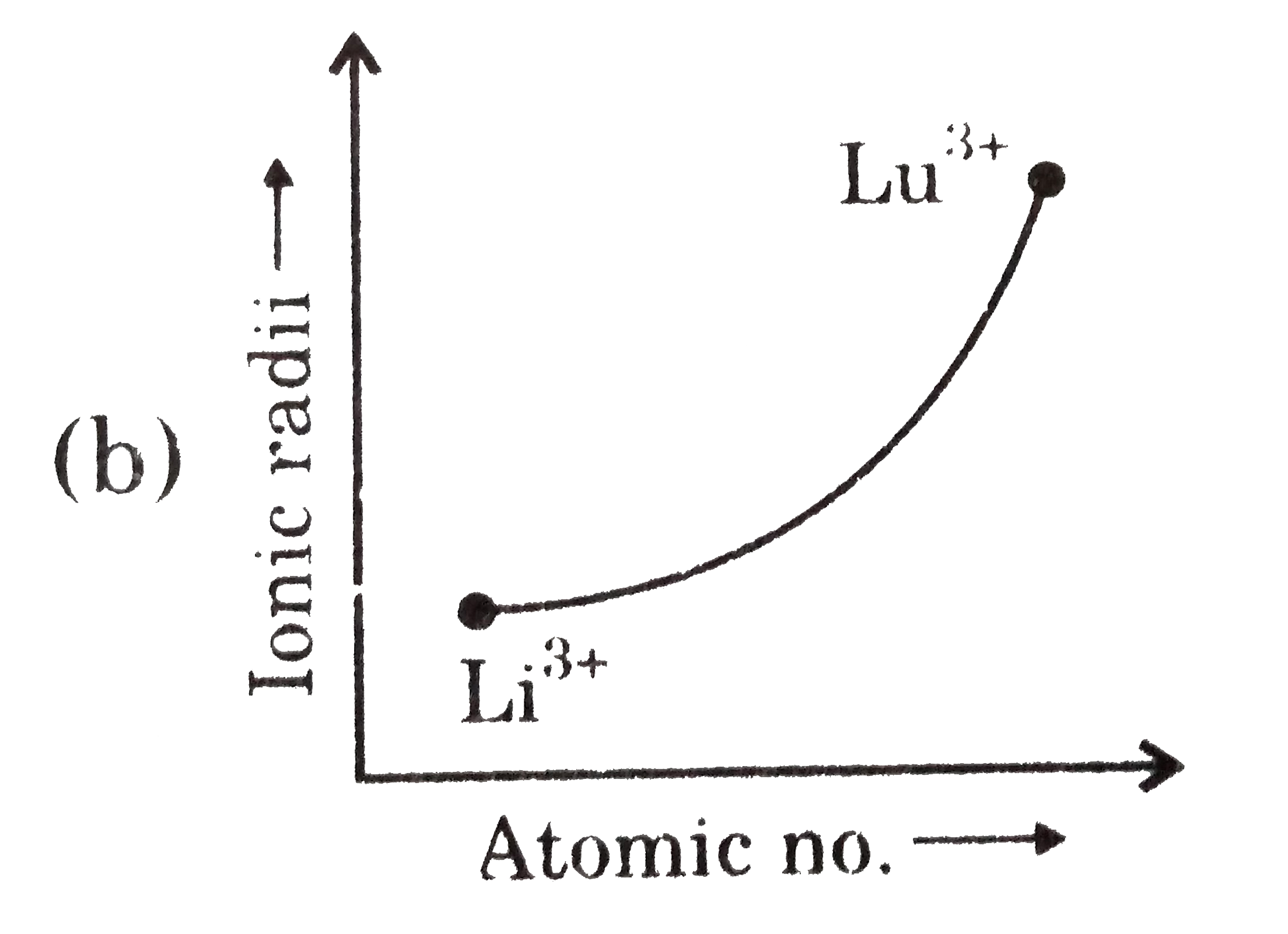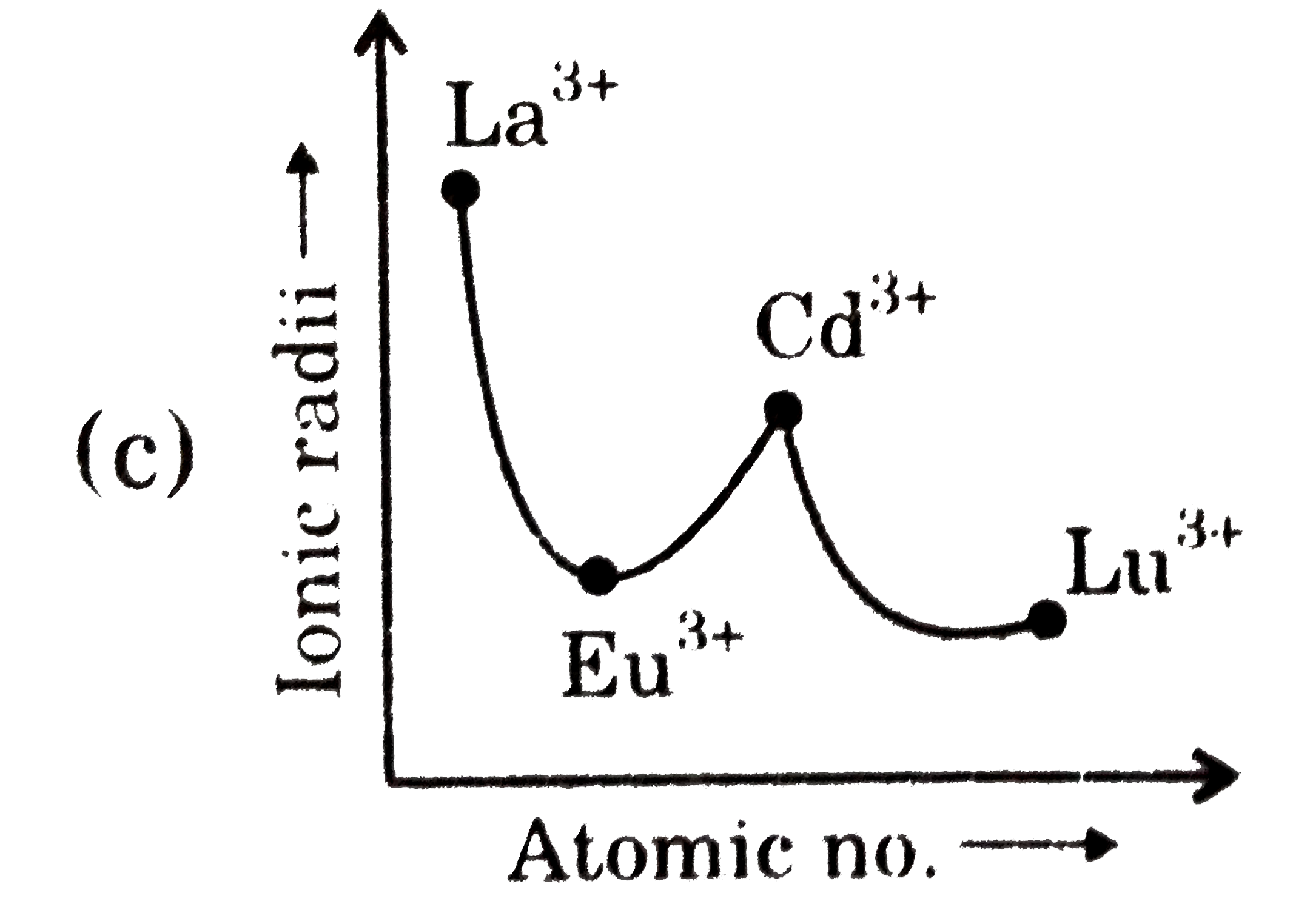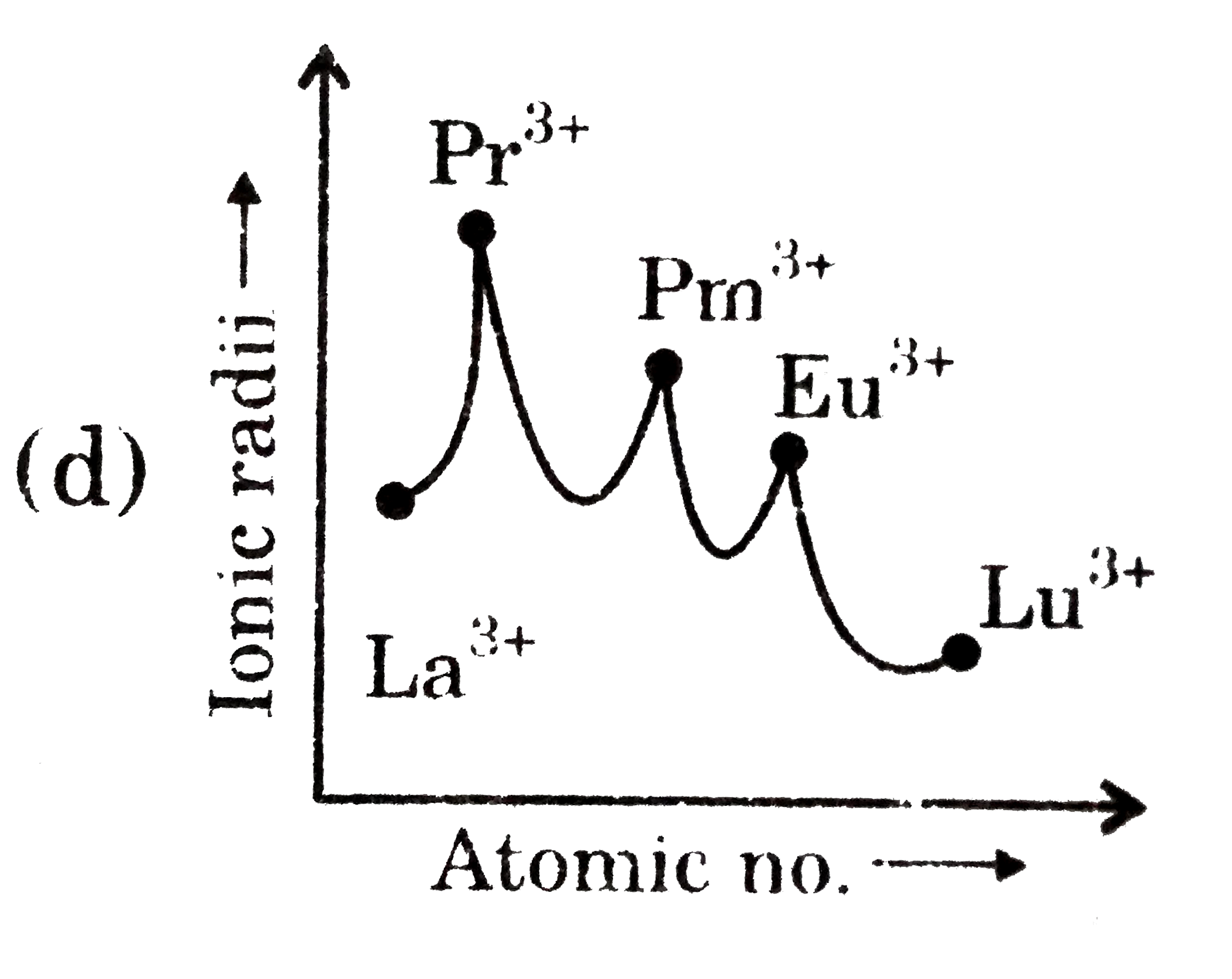Select the correct graphical representation :




The correct Answer is:A
To solve the question regarding the correct graphical representation of the relationship between ionic radii and atomic number for lanthanides, we can follow these steps:
Step 1: Identify the Elements
The lanthanides series includes the following elements:
- Lanthanum (La)
- Cerium (Ce)
- Praseodymium (Pr)
- Neodymium (Nd)
- Promethium (Pm)
- Samarium (Sm)
- Europium (Eu)
- Gadolinium (Gd)
- Terbium (Tb)
- Dysprosium (Dy)
- Holmium (Ho)
- Erbium (Er)
- Thulium (Tm)
- Ytterbium (Yb)
- Lutetium (Lu)
Step 2: Understand the Trend
As we move from lanthanum (atomic number 57) to lutetium (atomic number 71) in the lanthanide series:
- The atomic number increases.
- The ionic radii generally decrease due to the increase in effective nuclear charge.
Step 3: Plot the Graph
On a graph where the x-axis represents the atomic number and the y-axis represents the ionic radii:
- As the atomic number increases from 57 to 71, the ionic radii should show a downward trend.
- This means the graph will slope downwards from left to right.
Step 4: Select the Correct Graph
Among the provided options, the graph that shows a decreasing trend (downward slope) as the atomic number increases will be the correct representation. According to the video transcript, the first option is the correct one.
Final Answer
The correct graphical representation is Option 1, which shows a downward trend in ionic radii as the atomic number increases for the lanthanides.
---
The lanthanides series includes the following elements:
- Lanthanum (La)
- Cerium (Ce)
- Praseodymium (Pr)
- Neodymium (Nd)
- Promethium (Pm)
- Samarium (Sm)
- Europium (Eu)
- Gadolinium (Gd)
- Terbium (Tb)
- Dysprosium (Dy)
- Holmium (Ho)
- Erbium (Er)
- Thulium (Tm)
- Ytterbium (Yb)
- Lutetium (Lu)
As we move from lanthanum (atomic number 57) to lutetium (atomic number 71) in the lanthanide series:
- The atomic number increases.
- The ionic radii generally decrease due to the increase in effective nuclear charge.
On a graph where the x-axis represents the atomic number and the y-axis represents the ionic radii:
- As the atomic number increases from 57 to 71, the ionic radii should show a downward trend.
- This means the graph will slope downwards from left to right.
Among the provided options, the graph that shows a decreasing trend (downward slope) as the atomic number increases will be the correct representation. According to the video transcript, the first option is the correct one.
The correct graphical representation is Option 1, which shows a downward trend in ionic radii as the atomic number increases for the lanthanides.
Topper's Solved these Questions
- F-BLOCK ELEMENTSBook:GRB PUBLICATIONChapter:F-BLOCK ELEMENTSExercise:Reasoning type
Explore 8 Videos
- F-BLOCK ELEMENTSBook:GRB PUBLICATIONChapter:F-BLOCK ELEMENTSExercise:Multiple objective type
Explore 9 Videos
- ENVIRONMENTAL CHEMISTRY Book:GRB PUBLICATIONChapter:ENVIRONMENTAL CHEMISTRY Exercise:Straight objective type
Explore 40 Videos
- GRAPHICAL INTERPRETATIONBook:GRB PUBLICATIONChapter:GRAPHICAL INTERPRETATIONExercise:Subjective Type
Explore 23 Videos
Similar Questions
Knowledge Check
Select the correct mathematical representations for Raoult's law.
APS=P∘Nn+NBP∘−PSPS=nNCP∘−PSP∘=nn+NDPS∝ mole fraction of solventSelect the correct Lewis dot representation.
A B
B C
C D
D
Out of the following graphs, which grpahs shows the correct relation (graphical representation) for LC parallel resonant circuit ?
A B
B C
C D
D
Graphical Representation For Motion
View SolutionGraphical representation of raoults law
View SolutionOut of the following graphs, which grpahs shows the correct relation (graphical representation) for LC parallel resonant circuit ?
View SolutionA particle executes SHM. Then the graph of velocity as a function of displacement is
View SolutionWhen HCl (aq) is titrated with NaOH(aq) conductometrically then the graphical representation of the titration will be
View Solution

